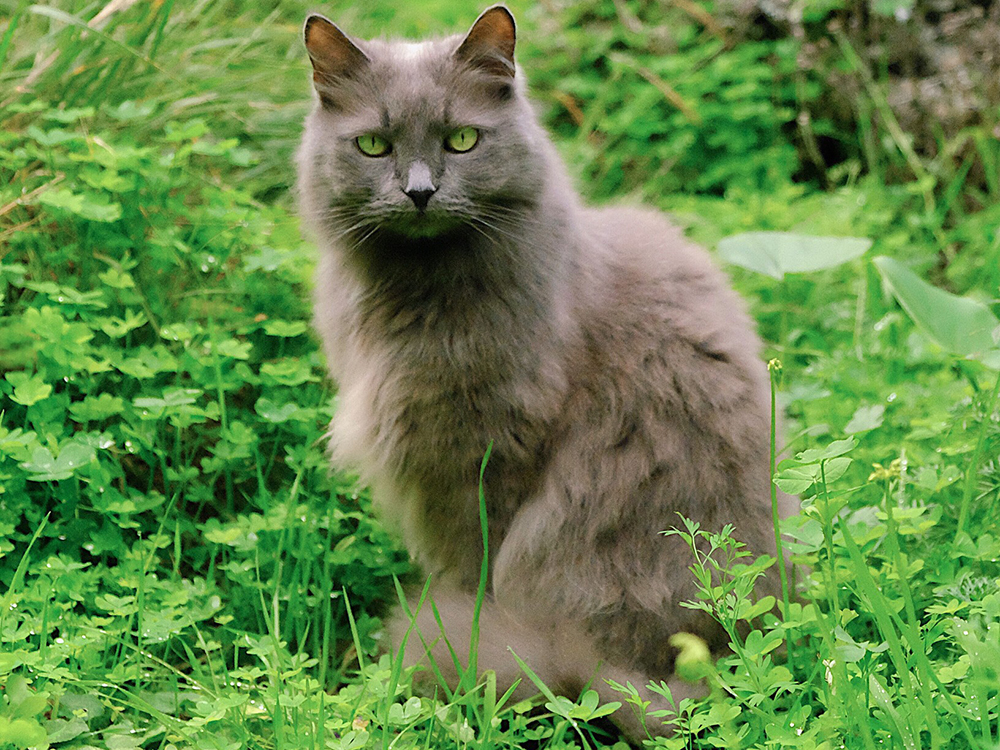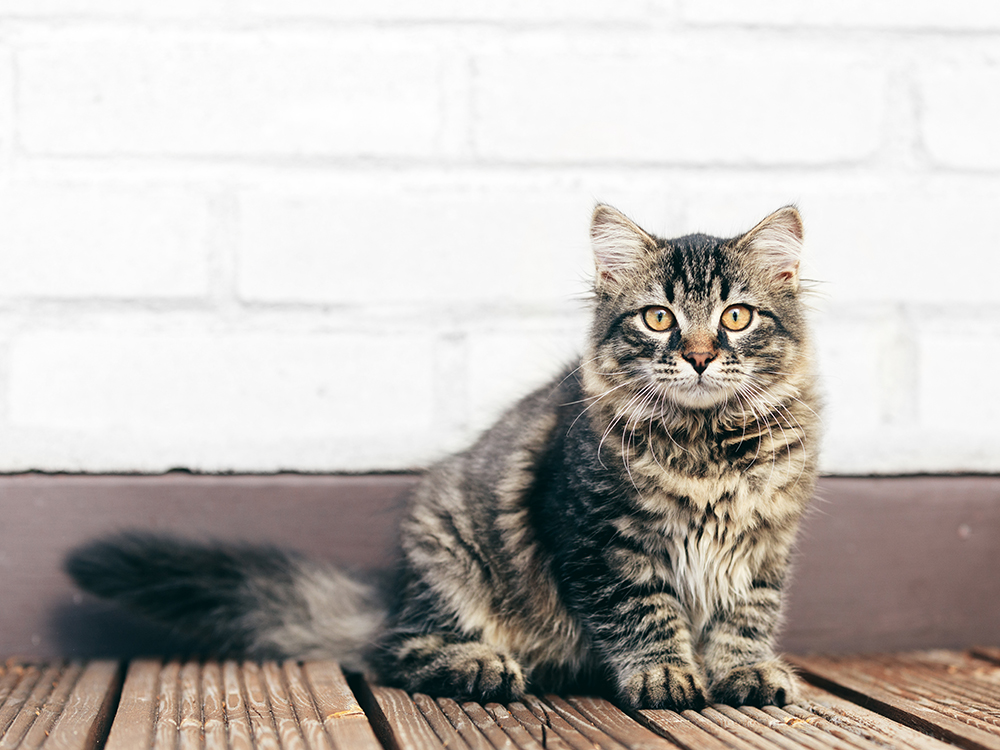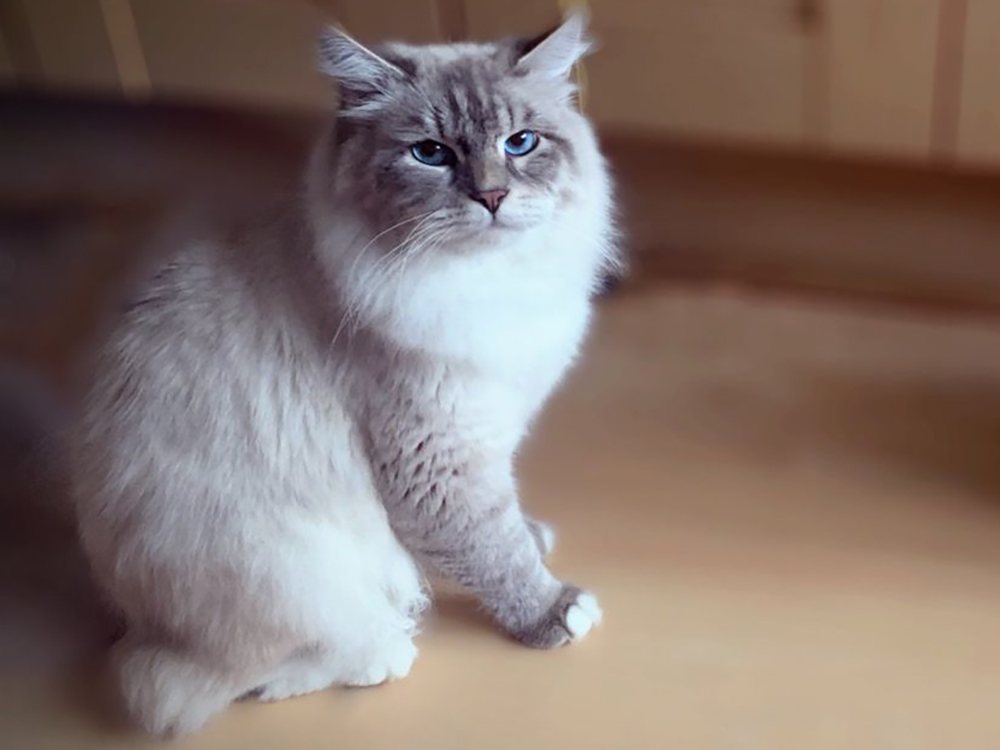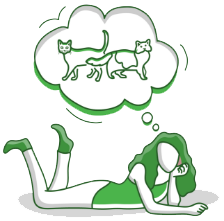
Siberian Breed Pictures
Vital Breed Stats
| Weight: | 3 - 8 kg M | 3 - 8 kg F |
| Life Expectancy: | 12 - 15 years |
Breed Characteristics
| Size: |  |
| Grooming: |  |
| Trainability: |  |
| Good with Children: |  |
| Good with other pets: |  |
| Affectionate: |  |
| Active Level: |  |
Give a thumbs up if you love the Siberian

0
More About the Breed
History
It has been said that the first references of the Siberian go as far back as 1,000 AD. Some records date back to the 13th century. Both indicate that this cat breed is an ancient one. Like other old breeds such as the Maine Coon and Norwegian Forest Cat, the Siberian is a natural breed.
Although it has existed for over a millennium, the Siberian cat only began to be showcased beyond Russian shores in the late 1800s. This huge and striking feline was normally seen in the forests and streets of Siberia.
As the country’s borders opened, the official National Cat of Russia got slowly introduced to the world. Many started to domesticate these street/forest cats and even featured them at pet shows. It has been presented at cat shows in New York and England in the 19th century. However, it was only in 1987 that the breed’s standard was created.
In the 1990s, Siberian cats were exported to various parts of the globe, particularly the United States. In the UK, the majestic feline made its entrance only in 2002. Despite the late introduction, the Siberian quickly gained popularity in Britain.
Appearance and Grooming
This feline breed is one of the biggest ones in the world and is second only to the huge Maine Coon. Its average weight can range from 10 to 20 lbs, akin to that of a small dog, even bordering on medium-sized canine territory.
Although stocky, the Siberian is a surprisingly agile cat. It is a skilled jumper, able to reach great heights. Its head is big and proportionate to its large body. Its upright ears have a rounded tip and are spaced nicely. Its soulful eyes are large and oval and set at an oblique angle. This slightly upturned eye position is unique to this breed and lends it a foreign look. Although the eye colour could be any hue, Siberians with white patterns should only have blue or odd hues. Colourpointed varieties are expected to have blue eyes.
This breed’s rectangular torso is large and muscular. Its chest is broad and the neck is short. Its back is slightly arched, which allows it to jump to great heights. The tail, long and bushy, slightly tapers towards the tip from a broad base. Its legs are powerful and proportionate to its body. The back legs are rather longer than the front ones.
The Siberian cat’s semi-longhaired coat, which is its most distinctive feature, is dense and triple-layered. This very weather-resistant coat protects this feline against the harsh weather conditions of its natural Siberian habitat. It could be of any colour and pattern.
A test done in 1999 revealed that the Siberian cat has lower Fel d 1 levels. This protein is an allergen found in felines, particularly in the saliva and fur. This finding led to the belief that this cat is less likely to trigger allergies in humans.
The Siberian’s triple coat needs sheds much and should be regularly brushed to keep it in good condition.
Temperament and Intelligence
This cat breed’s place of origin may be cold, but its heart is anything but. Affectionate, playful, calm, gentle, and a people lover, the Siberian cat temperament is doglike. It will follow its humans around the home and involves itself in their activities, even in reading. However, it is not clingy or demanding. It will greet its owner with quiet yet delightful chirps. It may be wary with strangers, though. It takes some time for this cat to warm up to new faces.
The Moscow semi-longhair, as it is also called, is playful and active. It will engage its owner in a game of fetch or leap from one high place to another. Its agile body and athleticism allows it to get itself in precarious positions. Although it usually does not break household items, owners should set fragile objects in secure places to avoid accidents. Further, this feline likes amusing itself with water, whether in a tub, from a faucet, or in its water bowl. As it is good with children and gets along with other pets, the Siberian makes a fantastic family pet. Owners will enjoy its playful nature to the hilt as this breed, due to its size, matures slowly than other breeds. It takes 5 years for it to reach full maturity.
Nutrition and Feeding
The Siberian cat should be provided a nutritious diet that fulfils its nutritional requirements. It should be consistently given the same food following the same feeding times. If there are changes to its diet, those must be done slowly to prevent digestive problems.
The food portions should depend on the cat’s weight, age, and activity level. Its diet must include at least 25% protein and just 5% carbohydrates.
Health and Exercise
- Hypertrophic cardiomyopathy (thickening of heart muscle)
- Pyruvate kinase deficiency
Cost of Ownership
For a well-bred Siberian kitten, prepare to spend about £150–£650. Average insurance expenses would cost £15 (basic) to £29 (lifetime) monthly. Food expenses may range from £15–£20 each month. For vaccinations, boosters, annual checks, and other veterinary costs, pet care costs may add up to more than £600 each year.
On average, a Siberian cat owner will spend about £40–£60 per month. The insurance costs can also affect this estimate. For its entire lifetime (12–15 years), the expenses can be as low as £5,760 to as high as £10,800 overall. This estimate does not include the initial costs incurred in acquiring this cat.
Is a Siberian Right for You?
- Affectionate, gentle, and people-loving, the Siberian cat is a great addition to families.
- This breed is good with children and can live with other pets.
- Its high energy and agility requires keeping breakable items in the home at secure places.
- Its dense coat can shed much and requires regular grooming.
- This feline is a healthy breed with minimal hereditary health risks.










